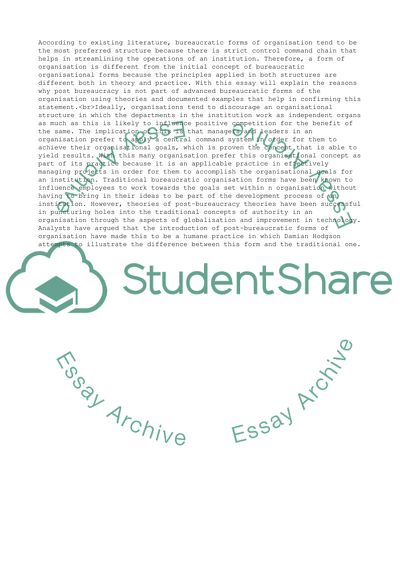Cite this document
(Post Bureaucracy and Bureaucratic Forms of Organisation Coursework, n.d.)
Post Bureaucracy and Bureaucratic Forms of Organisation Coursework. Retrieved from https://studentshare.org/management/1821419-post-bureaucracy-does-not-constitute-an-advance-on-bureaucratic-forms-of-organisation-do-you-agree-with-this-statement-explain-your-answer-using-theory-and-examples
Post Bureaucracy and Bureaucratic Forms of Organisation Coursework. Retrieved from https://studentshare.org/management/1821419-post-bureaucracy-does-not-constitute-an-advance-on-bureaucratic-forms-of-organisation-do-you-agree-with-this-statement-explain-your-answer-using-theory-and-examples
(Post Bureaucracy and Bureaucratic Forms of Organisation Coursework)
Post Bureaucracy and Bureaucratic Forms of Organisation Coursework. https://studentshare.org/management/1821419-post-bureaucracy-does-not-constitute-an-advance-on-bureaucratic-forms-of-organisation-do-you-agree-with-this-statement-explain-your-answer-using-theory-and-examples.
Post Bureaucracy and Bureaucratic Forms of Organisation Coursework. https://studentshare.org/management/1821419-post-bureaucracy-does-not-constitute-an-advance-on-bureaucratic-forms-of-organisation-do-you-agree-with-this-statement-explain-your-answer-using-theory-and-examples.
“Post Bureaucracy and Bureaucratic Forms of Organisation Coursework”, n.d. https://studentshare.org/management/1821419-post-bureaucracy-does-not-constitute-an-advance-on-bureaucratic-forms-of-organisation-do-you-agree-with-this-statement-explain-your-answer-using-theory-and-examples.


